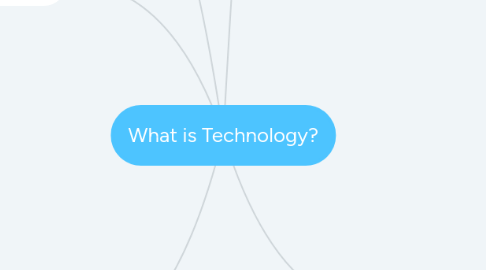
1. How ideas changed
1.1. Categorized multiple views of technology use
1.2. History of technology
1.3. Understand real meaning of technology
2. Why we need new technology
2.1. Learn courses virtually
2.2. Do tasks easily and quickly in a better way
2.3. Store large amount of data in one small chip
2.4. Manage databases
2.5. Share data, live locations, documents, audio and video files, etc.
2.6. Secure private and financial data
2.7. Online transcations
2.8. Connects people easily
3. References
3.1. Kumar, V., Kumar, U. & Persaud, A. Building Technological Capability Through Importing Technology: The Case of Indonesian Manufacturing Industry. The Journal of Technology Transfer 24, 81–96 (1999).
3.2. Isman. (2012, April). “Technology and Technique: An Educational Perspective” - TOJET: The Turkish Online Journal of Educational Technology. Retrieved from http://tojet.net/articles/v11i2/11222.pdf
3.3. Millard, Derrick. (2021). What is Technology? : What is Technology?. Retrieved from https://slate.sheridancollege.ca/d2l/le/content/888170/viewContent/11251956/View
3.4. Fiedler, Arthur. (2011, October 3). The history of technology in education: [Video]. YouTube. The history of technology in education
3.5. Millard, Derrick. (2021). What is Technology? : Definition Of Technology. Retrieved from https://slate.sheridancollege.ca/d2l/le/content/888170/viewContent/11251955/View
4. I though technology is
4.1. Artificial Intelligence
4.2. E-commerce websites
4.3. Electronic devices
4.3.1. Headphone
4.3.2. Hard disk
4.3.3. Media Player
4.3.4. Mobile phone
4.3.5. Laptop
4.3.6. Gaming devices
4.4. Virtual reality
4.5. Auto pilot machinery
5. After learning module technology is
5.1. More than a collection of machines and devices
5.1.1. "Requirements of technology - Investigation of human mind, socio - cultural environment and interactions with technological artifacts" (Isman, 2012, 208)
5.1.2. Formal definition
5.1.2.1. "Practical application of knowledge or manner of accomplishing a task" (Isman, 2012)
5.1.3. Dictionary definition
5.1.3.1. Techn - art, craft and skills
5.1.3.2. ~ology - Systematic treatment
5.1.3.3. Technology is nothing about electronic gadgets
5.2. Two primary components of technology
5.2.1. Physical component
5.2.1.1. Products
5.2.1.2. Tooling
5.2.1.3. Equipments
5.2.1.4. Blueprints
5.2.1.5. Techniques and processes
5.2.2. Informational component
5.2.2.1. How in
5.2.2.1.1. Management
5.2.2.1.2. Marketing
5.2.2.1.3. Production
5.2.2.1.4. Quality control
5.2.2.1.5. Reliability
5.2.2.1.6. Skilled labor
5.2.2.1.7. Functional areas
5.3. History of technology
5.3.1. 1564 - Pencil
5.3.2. 1801 - Slates and chalk
5.3.3. 1873 - Typewriter
5.3.4. 1890 - Chalkboard
5.3.5. 1925 - Radio
5.3.6. 1930 - Overhead projector
5.3.7. 1940 - Video
5.3.8. 1950 - Headphones
5.3.9. 1980 - Personal computer
5.3.10. 1997 - Social media
5.3.11. 2020 - Ed tech applications
5.4. Different point of views
5.4.1. Single person
5.4.1.1. Telephone
5.4.1.2. Digital camera
5.4.1.3. Water tap
5.4.1.4. Spoon and fork
5.4.1.5. Computer
5.4.1.5.1. Search information
5.4.1.5.2. Play games
5.4.1.5.3. Chat with friends, family member, etc.
5.4.1.5.4. Type papers
5.4.1.6. Microphone
5.4.1.7. Umbrella
5.4.1.8. Door locks
5.4.1.9. Pen and pencil
5.4.2. Teacher and student
5.4.2.1. Audio and video recorder
5.4.2.2. Pen and pencil
5.4.2.3. Interactive black and white boards
5.4.2.4. Presenter
5.4.2.5. Podcasts
5.4.2.6. Printer
5.4.2.7. Online collaboration
5.4.3. Doctor
5.4.3.1. Robotic surgery
5.4.3.2. Wireless brain sensors
5.4.3.3. 3D printing
5.4.3.4. Artificial organs
5.4.4. Business person
5.4.4.1. E-commerce websites
5.4.4.2. Software applications
5.4.4.3. Database of employees and users
5.4.4.4. Cloud storage
5.4.4.5. Server
